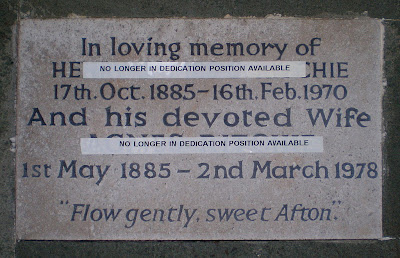Squaquarinellus
In Book 21 of Teofilo Folengo's Baldus (1517), a spoof epic in macaronic hexameters—that is, half Latin, half Italian, the latter frequently provincial—the eponymous hero and his friends find themselves in battle with a dragon or serpent (anguis, serpens, draco, drago, dragus, according to taste); finally, after one warrior rides its back and punches it to the ground, on the verge of death, it transforms into a formosa putina. . . cui nomen Smiralda fuit, de gente luparum, a beautiful girl by name of Smiralda, of the race of she-wolves. Falchetto, the dog-man leading the attack on the dragon, is about to duff Smiralda up too, but she entreats him:
At any rate, it strikes me that Smiralda's chin-pulling alludes to the well-known gesture made by Thetis when entreating Zeus at Iliad 1.501: she dexiterēi d' ar' hup' anthereōnos helousa, takes hold of his chin from below with her right hand, while at 8.371 Athena reports that Thetis ellabe cheiri geneiou, grasped [Zeus'] chin with her hand. (Compare 10.454, where the Trojan spy Dolon is about to do the same to Diomedes.) This gesture is illustrated in Ingres' rather garish and ungainly early painting:

Samuel Butler, in a notorious 1892 lecture arguing for the poem's female authorship, remarks, à propos of this passage, that 'it is still a common Italian form of salutation to catch people by the chin. Twice during the last summer I have been so seized in token of affectionate greeting, once by a lady and once by a gentleman.' Butler's holiday reminiscences aside, Thetis is not making the gesture as an 'affectionate greeting'—she is indicating her suppliancy. For Walter Leaf, who, like Butler, translated the Iliad, with a little help from his friends, the action suggests a beaten warrior who 'can only clasp his enemy's legs to hamper him, and turn aside his face so that he cannot see to aim the final blow, until he has at least heard the prayer for mercy'. R. B. Onians, in his fantastical Origins of European Thought (1951), disputes Leaf's interpretation, arguing that the chin (geneios), like the knee (gonu), is related to genus and generation: 'this would also explain why the chin, as if holy in the same way as the knee, was clasped by the Greek suppliant'.
Folengo's Smiralda, whose name has already been misheard as Smerdola two hundred lines earlier, is not humbly entreating Falchetto. Her gesture is instead ironic, a two-fingered teasing or chucking of the chin, softening Falchetto's heart and brain: a solicitative trollop, Thetis in burlesque.
Talibus ingannans, Falchettum porca carezzatThe putanella, little whore, fat squaquarinellum eius barbozzo duobus digitis: she does something to his chin [barbozzo in dialect, see here] with two fingers. The poem's recent translator, Ann Mullaney, renders the passage:
barbozzoque eius digitis putanella duobus
fat squaquarinellum, velut est ars vera piandi,
sive carezzandi menchiones atque dapocos. (ll. 446-449)
Tricking him with such words, the pig caresses Falchetto; the little whore takes his chin between two fingers and gives it a small tug, in accordance with the true art of getting and stroking dolts and low-lifes.In Emilio Faccioli's 1989 translation into modern Italian, this squaquarinellus is given as 'con due dita gli va titillando il barbozzo'. Folengo's own phrase derives from the Mantuan idiom far squaquarin, which Cherubini paraphrases as far vezzi, that is, 'to fondle, caress, flatter'. The word seems to come in turn from the verb squaquarare, which appears three times in the poem: 1.144, 7.437, and 24.39, translated variously 'to sport', 'to live it up', and 'to soak up', where Cherubini offers ciarlare (to chat) and gozzovigliare (to carouse). The more usual meaning is 'to soften, quicken, loosen', also 'to shit, blurt out, reveal a secret', with connotations of both diarrhoea and soft cheese, two Dalinian motifs that occur throughout the poem.
At any rate, it strikes me that Smiralda's chin-pulling alludes to the well-known gesture made by Thetis when entreating Zeus at Iliad 1.501: she dexiterēi d' ar' hup' anthereōnos helousa, takes hold of his chin from below with her right hand, while at 8.371 Athena reports that Thetis ellabe cheiri geneiou, grasped [Zeus'] chin with her hand. (Compare 10.454, where the Trojan spy Dolon is about to do the same to Diomedes.) This gesture is illustrated in Ingres' rather garish and ungainly early painting:

Samuel Butler, in a notorious 1892 lecture arguing for the poem's female authorship, remarks, à propos of this passage, that 'it is still a common Italian form of salutation to catch people by the chin. Twice during the last summer I have been so seized in token of affectionate greeting, once by a lady and once by a gentleman.' Butler's holiday reminiscences aside, Thetis is not making the gesture as an 'affectionate greeting'—she is indicating her suppliancy. For Walter Leaf, who, like Butler, translated the Iliad, with a little help from his friends, the action suggests a beaten warrior who 'can only clasp his enemy's legs to hamper him, and turn aside his face so that he cannot see to aim the final blow, until he has at least heard the prayer for mercy'. R. B. Onians, in his fantastical Origins of European Thought (1951), disputes Leaf's interpretation, arguing that the chin (geneios), like the knee (gonu), is related to genus and generation: 'this would also explain why the chin, as if holy in the same way as the knee, was clasped by the Greek suppliant'.
Folengo's Smiralda, whose name has already been misheard as Smerdola two hundred lines earlier, is not humbly entreating Falchetto. Her gesture is instead ironic, a two-fingered teasing or chucking of the chin, softening Falchetto's heart and brain: a solicitative trollop, Thetis in burlesque.



